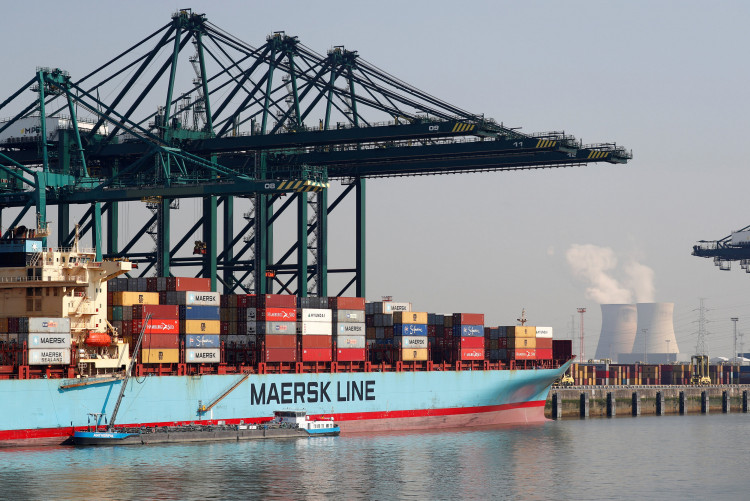Maersk, dubbed as the world's largest operator of container shipping, is sailing from East Asia to Europe via the Arctic Ocean for the first time on Sept. 1. The Venta Maersk is set to become the first-ever container ship to be able to brave the freezing conditions of the Northern Sea Route.
The container ship, measuring 200 meters in length and with a breadth of 35.2 meters, will be leaving the Russian port of Vladivostok later in August. The Venta Maersk can transport about 3,600 containers. The ship is designed to endure the icy waters as cold as negative 77 degrees Fahrenheit. It can successfully traverse on concrete ice up to 1 meter thick.
Its 26-membered crew was trained to survive the cold temperatures. Inside the containers are frozen fishes that are intended to test out whether they can be successfully delivered fresh to European ports.
The international shipping industry has always had its eyes on the Northern Sea Route as an alternative to Egypt's Suez Canal for the shipments of goods between Asia and Europe.
In 2017, China Ocean Shipping Company or COSCO sent a dozen vessels through the Arctic route, including five transit voyages. This was a dramatic increase from 2016 when COSCO had only managed to send five vessels. COSCO's 2017 deployment has been touted as the largest fleet of non-Russian vessels that braved the waters of the Northern Sea Route.
Teekay of Hamilton, Bermuda and Mitsui O.S.K. Lines or MOL of Tokyo, Japan have also started using the route for their transport of natural gas.
Frederic Lasserre, a professor at the Universite Laval Quebec, thinks that Maersk might have been observing COSCO's activities in the Arctic, testing the conditions on whether the route is commercially viable. COSCO has been secretive about whether it's undertaking on the Northern Sea Route was profitable or whether efforts are cost-effective.
Lasserre told High North News that Maersk may want to take one step ahead of MOL which could also be planning trial transits on the Arctic route. The professor added that Maersk may want its personal experience on the region to see what can be done to develop the market to not be left behind in case COSCO and MOL turned out to be successful in their respective attempts in the Arctic.
Arild Moe, a senior research fellow at the Fridtjof Nansen Institute, believed that Arctic route will not be commercially viable, highlighting that the region is only passable in some parts of the year. Ice can delay ships which in effect will also delay delivery to the detriment of the customers.
Indeed, a Maersk representative told Splash that its endeavor at the Arctic is just a "one-off" attempt that is only aimed at testing an unfamiliar territory. The company also wanted to collect scientific data which the representative did not elaborate.
The representative underlined that as of now, Maersk does not consider the Northern Sea Route as an alternative route for its shipments due to its unavailability for the most part of the year. The company also assessed that ships will need ice-classed vessels to pass through the route, something that requires additional investments which the company is not keen on doing for the meantime. Large vessels that regularly pass through the Arctic are using nuclear-powered Russian icebreakers.






